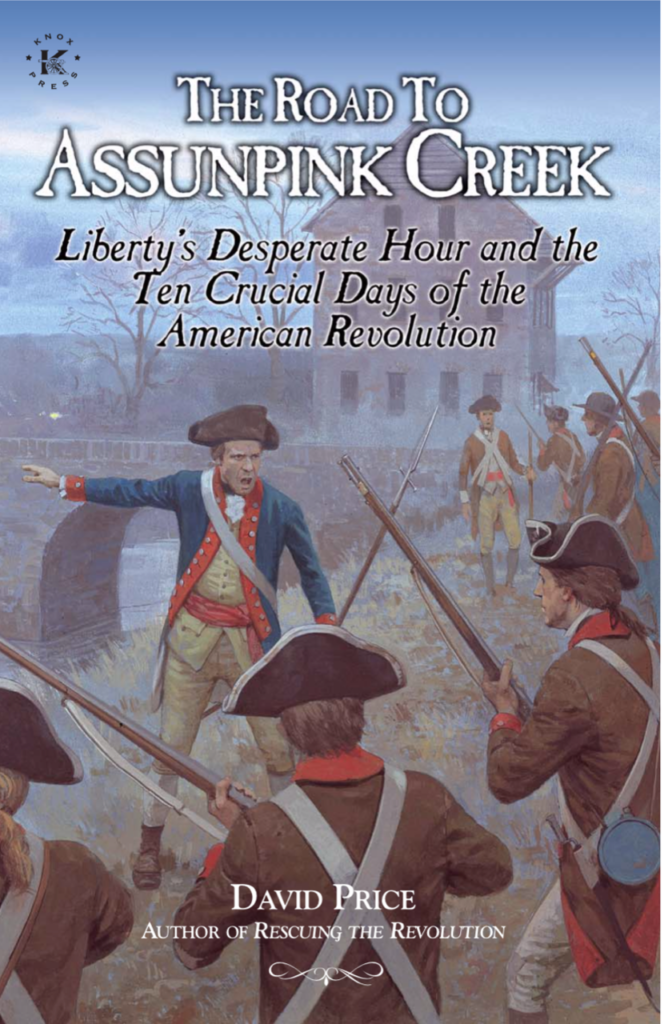Before Washington Crossing Historic Park historical interpreter David Price retired from his full-time position in the New Jersey state government several years ago, he’d occasionally stroll along the Assunpink Creek outside his Trenton office.
From the small bridge that spans the narrow stream, he’d look down and marvel at the fact that it was once all that stood between two armies.
The more Price read up on the Battle of Assunpink Creek, the more he came to consider it to be an unappreciated but pivotal turning point of the American Revolution.

That idea became the thesis of his new book, his second on the American Revolution: The Road to Assunpink Creek: Liberty’s Desperate Hour and the Ten Crucial Days of the American Revolution.
“Historians have generally discounted the event. Most focus on the Christmas night crossing, the attack on the Hessians in Trenton and the Battle of Princeton,” Price says. “I wanted to give the engagement its due, so I came up with a different way of telling the story, shifting the focus of the ‘Ten Crucial Days’ to that battle. Certainly, no other book has emphasized it to the same extent.”
The Battle of Assunpink Creek unfolded on January 2, 1777. It was the second in a sequence of three pivotal victories by George Washington’s troops between December 25 and January 3, a period that’s come to be described as the “Ten Crucial Days.”
With a real chance of being trapped between Assunpink Creek and the Delaware River, Washington successfully gambled against a larger, better trained and more disciplined opposing force. Those wins—the first of significance by the Continental Army—reversed the momentum of the Revolutionary War.
“Had the rebel soldiers failed to stop the enemy’s advance that day, the result would in all probability have been the destruction of the Continental Army and possibly with it, the quest for American independence,” Price says.
Author-signed copies of the book are available in the Washington Crossing Historic Park gift shop.

